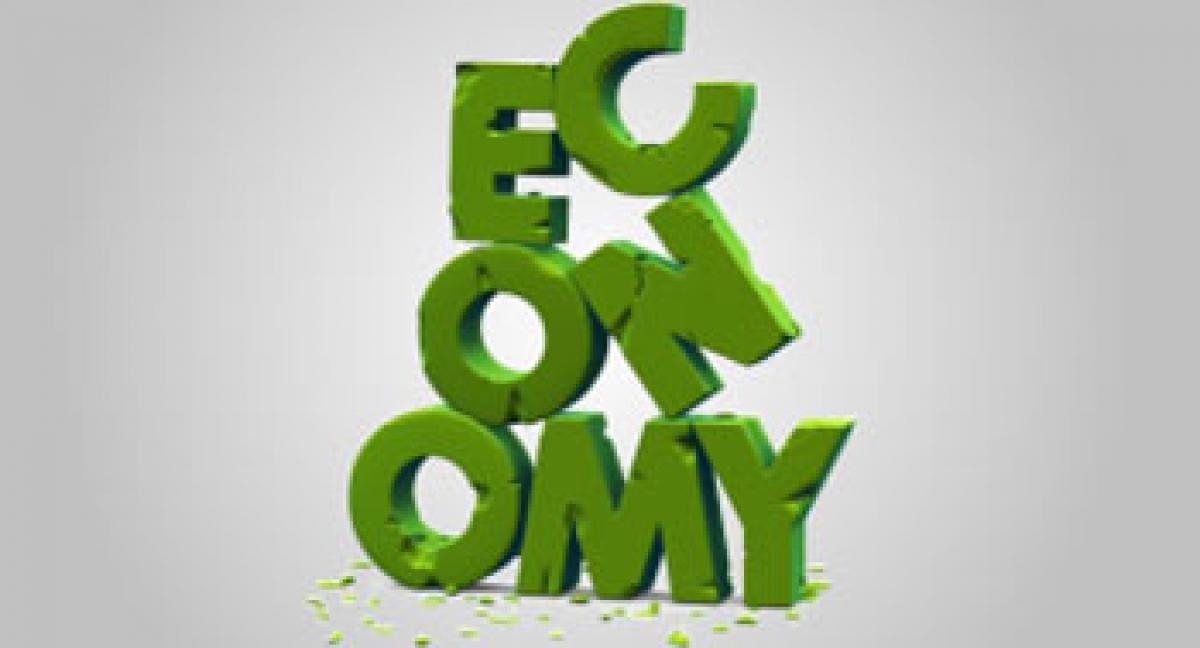Live
- Astronauts Stuck in Space: Sunita Williams and Barry Wilmore's Mission Extended Until February 2025
- 'Muslims don't vote for JD(U)', says Union Minister Lalan Singh
- St. Joseph’s organises literary fest
- Indian GenAI startups see 6 times surge in funding in Q2
- Revanth is a liar: Errabelli
- Big B pens heartfelt note for Abhishek’s work in latest film: You are Arjun Sen
- BGT 2024-25: India on brink of victory in Perth as Australia reach 227/8 at tea
- SC grants 4 weeks more to Centre to decide Balwant Singh Rajoana’s mercy plea
- Lucky for me to end up with PBKS under head coach Ponting: Stoinis
- Students pay the price for govt apathy
Just In

While the international financial institutions paint a bright picture of the Indian economy, the official account of the status of the economy reflected in the Mid Year Review (MYR) presents the ongoing concerns.
While the international financial institutions paint a bright picture of the Indian economy, the official account of the status of the economy reflected in the Mid Year Review (MYR) presents the ongoing concerns.
Inflation is no longer a major macroeconomic concern. But, the Consumer Price Index is certainly worrisome though the Whole Sale Price Index is negative. The prices of vegetables, pulses and other products that impact common man’s life is not captured by the economic data.
The external sector of the economy is robust. But, it is more due to unprecedented slump in global oil prices and fall in international commodity prices. The Current Account Deficit (CAD) is completely under control. But, the strengthening of the dollar has the potential to raise fresh concerns over foreign exchange reserves.
The GDP numbers are certainly encouraging given the status of the world economy especially the Chinese economy. The GDP growth rate is pegged over 7 per cent. However, the performance is below the expectations. The Mid Year Review estimates the real GDP growth rate in the first half of the financial year 2015-16 at 7.2 per cent as compared to 7.5 per cent in 2014-15 fiscal.
The overall tax collections were buoyant during the first half of 2015-16. But, this buoyancy was due to the indirect taxes paid by the common man. The direct taxes that are paid by the affluent have recorded a lesser growth rate.
The Mid Year Review echoes the Reserve Bank of India‘s estimates that the corporate profitability has eroded. The RBI Financial Stability Report warns that the fiscal health of the public sector banks is vulnerable due to lower corporate profitability.
The corporate profits are not buoyant. The industrial credit is significantly sluggish. The stressed assets account for 11.3 per cent of total advances. The share of large borrowers in the bad loans is as high as 87 percent. The capital expenditure by the major corporates is strained.
The growth in capital goods imports has sharply declined. The commodities like steel, iron, aluminum and cement are not performing well. These negative signals raise serious questions over the quest for Make in India.
The sown area in 2015-16 Kharif season has reduced as compared to 2014-15. The fall in sown area is due to erratic monsoon. The output of major crops like rice, groundnut, sugar cane and cotton has fallen.
However, the signs of revival in public investment is a healthy indication to set things right at least in future. But, the rise in public investment is constrained by mandate to reign in fiscal deficit.
Unless, the economy revives significantly, the government’s capacity to invest or spend will also be limited. Public investment is vital to revamp sagging domestic demand. But the sluggish economy limits the capacity to raise public expenditure. The Indian economy has to wriggle out of this vicious circle. The situation demands bold actions.

© 2024 Hyderabad Media House Limited/The Hans India. All rights reserved. Powered by hocalwire.com







